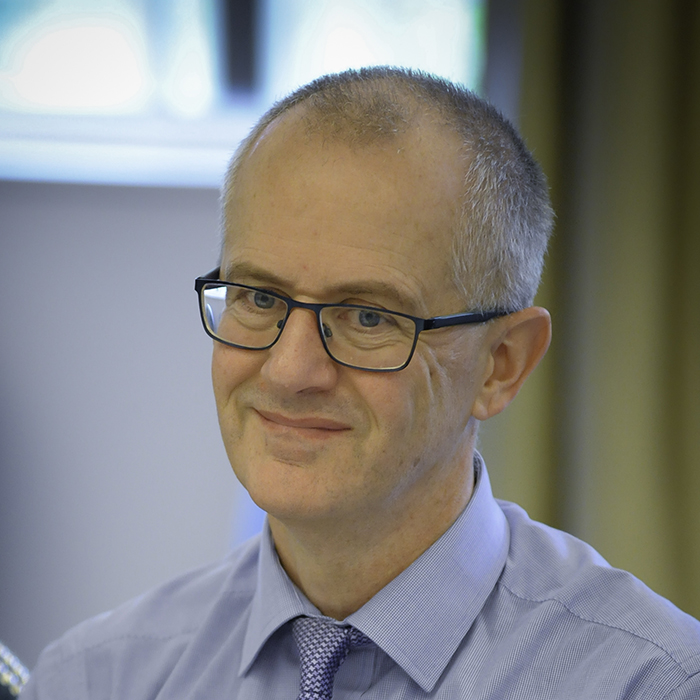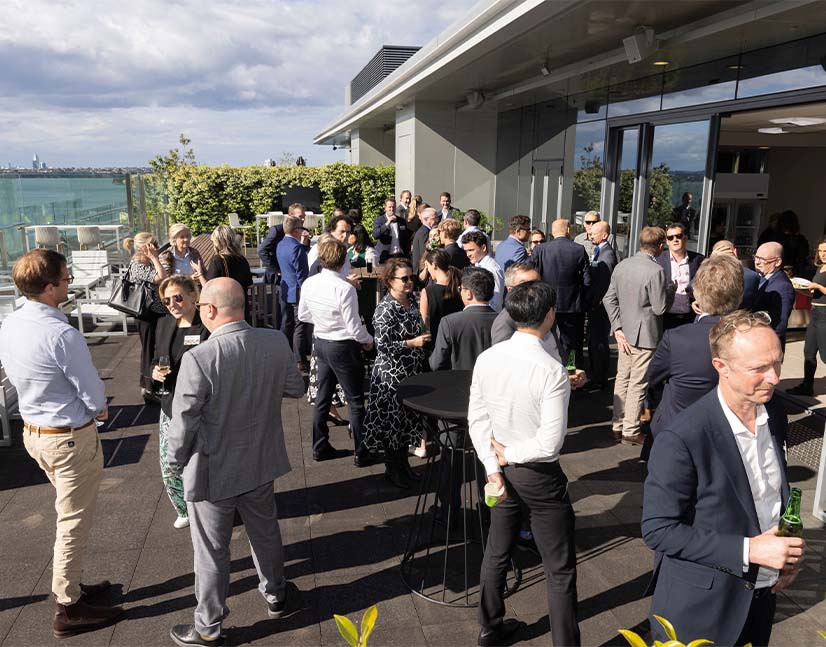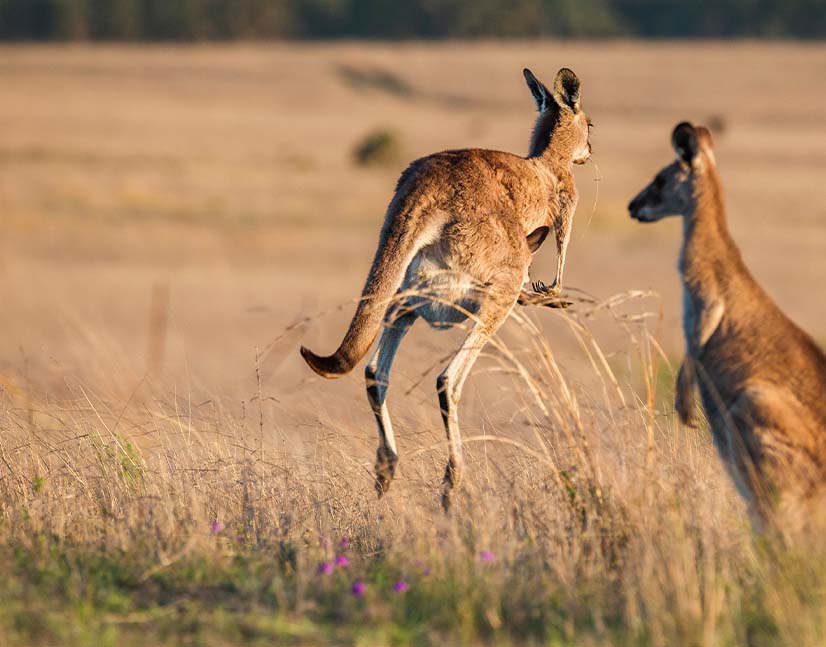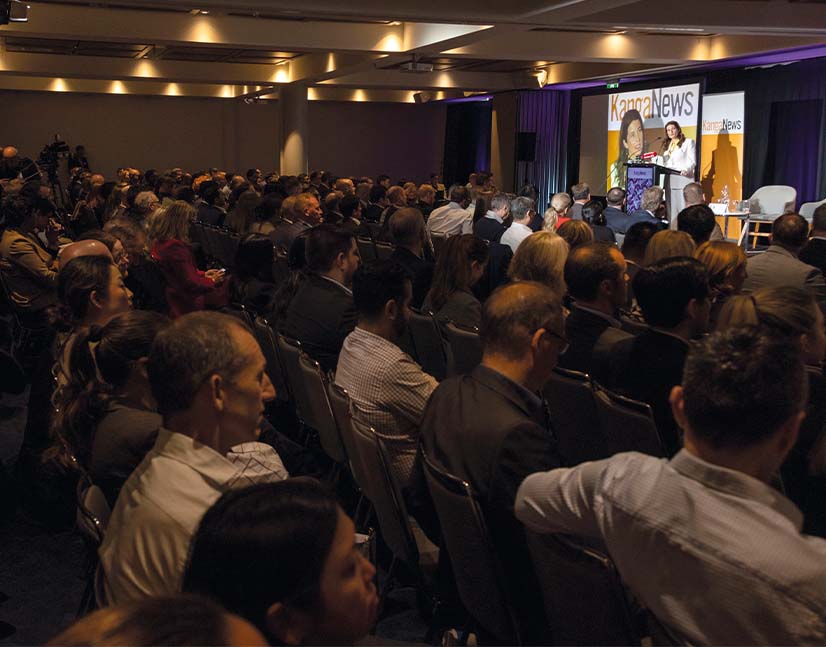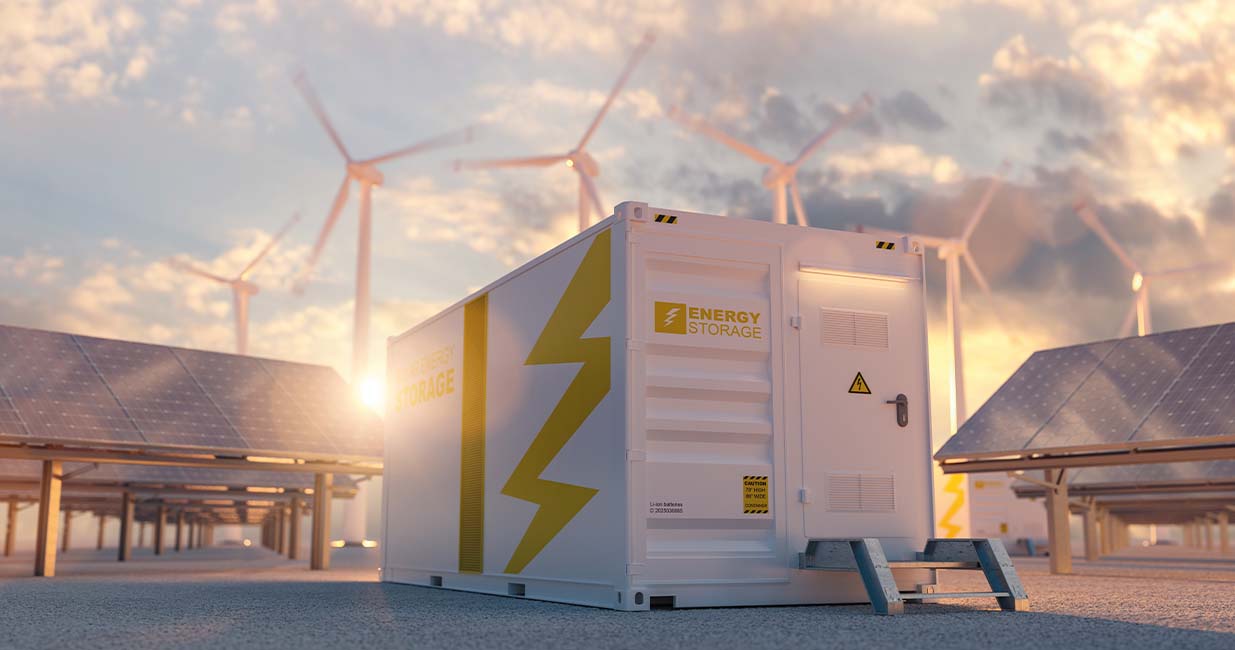
Australasian energy transition from generator to user
Energy transition will affect every nation, business and individual, and the scale of the task – and the resulting upheaval – is only now starting to become a stark reality. Fitch Ratings and KangaNews gathered Australian and New Zealand capital market participants representing the full power supply chain and the buy side to discuss with Fitch’s analysts what is coming down the pike.
NEW-FOUND FOCUS
Davison Focus on Australia’s energy transition has intensified now policy is in place. What is AGL Energy’s perspective on the scale of action and financing required?
LI The energy transition is one of the most significant the country has seen. AGL Energy announced its climate transition action plan in September 2022, when we brought forward the closure date for the Loy Yang coal plant in Victoria to 2035from 2045. We undertook a series of analyses to decide the date. We believe our updated closure timeframe provides a responsible pathway to decarbonise. We will need all stakeholders – including government, regulators, and financiers – to coordinate effectively to ensure the transition is well managed.
When we first announced the strategy, the announcement prompted a lot of discussion – including investors and stakeholders asking whether we could achieve net zero emissions by 2030. More recent discussions have been about the certainty of meeting our targets. As I say, coordination of governments and various stakeholders is a key enabler to delivery of collective decisions.
To give you an idea of the scale, just for AGL to service and supply our customer demand with up to 12 gigawatts of new generation and firming capacity will require a total investment of up to A$20 billion (US$13.3 billion) to be in place before 2036.
RAMAKRISHNAN The Australian federal government’s target of 82 per cent renewable generation by 2030, from about 35 per cent today, is very ambitious. The scale of investment required to reach this target is humungous, and we believe there will be significant challenges.
We have already seen infrastructure bottlenecks, especially on the transmission side. Policies are being written to address these issues but transmission is going to take time to build – and this will add to the challenge of adding new generation.
A huge amount of firming capacity is also required to offset the variable nature of solar and wind generation profiles. There has been some amount of policy action here, following the challenges and the crisis in the energy market last year, including the regulator seeking to ensure stability of supply to avoid blackouts.
The target is ambitious and must be managed pretty closely. It will involve significant rebalancing at various points to ensure the energy market is adequately supplied without losing momentum on the work needed to progress toward the targets.
KISHORE The whole debate on climate change and its effects has changed quite dramatically. Australia has always had a to-and-fro approach on climate change and climate reduction policies, but there now seems to be more cohesion at federal and state levels, including nationally and state-aligned targets. A significant amount of renewable generation will be needed plus new grid transmission. The 2030 target for a 43 per cent reduction in emissions is a very significant one in a very short time. It will be challenging, for multiple reasons.
One is that there are a lot of market risks in renewable projects in Australia. Long-dated power purchase agreements [PPAs] with sovereign or semi-sovereign off-takers, which provide price certainty and a limited amount of curtailment risk, are not typically in place. There is curtailment risk because the grid is quite unstable – and more renewables coming in only adds to intermittency and makes curtailment a lot more prevalent. The question is whether Australia can meet its target of 80-83 per cent renewables by 2030. It is a huge challenge. My expectation is that more wind will be built than solar, because there are a lot more curtailment risk issues with solar. If there is more wind, which could be in relatively more locations, a lot more transmission capacity may also be needed.
There is also the issue of separation of power across states, which is unique to Australia. I know the Rewire the Nation Fund is exploring transmission infrastructure, including the augmentation of between-state interconnector capacity. As more intermittent power comes in there is also growing interest in energy storage options, whether this means pumped hydro or battery storage, to provide a shock-absorber function or even to provide continuous power supply. All this will go hand-in-hand as renewable capacity is built out.
Davison Going back to AGL’s A$20 billion investment estimate, how does this break down between the various components of transition – generation and storage, for instance?
LI The estimate of A$20 billion is what is required to build 12 gigawatts of firming and renewable generation to replace our coal-fired generation to continue to supply customer demand. Our interim target is to get 5 gigawatts done by 2030, with the remaining 7 gigawatts between 2030 and 2035.
This ties in with our timeline for the closure of the Bayswater power plant in New South Wales (NSW) between 2030 and 2033, and Loy Yang by 2035. AGL will seek the most efficient way of sourcing the required 12 gigawatts of energy and firming. We will most likely build firming capacity, such as large-scale batteries and pumped hydro, on balance sheet as we believe there are benefits of owning these assets from a portfolio perspective. For other forms of renewable generation, including wind and solar, we will explore various structures including PPAs.
AGL also has a 20 per cent shareholding in Tilt Renewables and has access to its project pipeline. From a solar PV [photovoltaics] perspective, we can explore partnership with industrial and commercial customers, which involve installing rooftop PV on their premises and signing PPAs with them. We have also studied microgrid solutions with industrial organisations. Overall, though, we don’t necessarily see the value of owning solar assets as solar PV is expected to provide the lowest return. Between now and 2035, our balance sheet will deploy A$6-8 billion, which is not quite a linear replacement of our coal-fired generation. The pathway to internal development or external offtakes will vary, though the overall aim is to optimise cost and minimise risk.
Generation shortfall in the transition phase
Adding renewables and supplementing this power with distribution and storage infrastructure will have to be rapid and coordinated if energy security issues are to be avoided as fossil-fuel generation assets drop off the grid in the coming years.
SUTHERLAND Although New Zealand is not in the same position as Australia – we already have a lot of renewables and probably do not have the same tension as described – we have a similar challenge to Australia in the sense of resourcing the work that needs to be done. If we cannot find the workers or buy the transformers, wind turbines or solar panels, it is going to be a real hurdle.
As everyone globally is getting into renewables at the same time, it will be very difficult to purchase the resources and equipment required to complete the renewable transition – and it is going to be expensive.
HOWELL Along with mandatory reporting under the climate-related disclosures regime, New Zealand companies have really upped their game – particularly the energy companies. The five major gentailers’ level of sustainability reporting has gone from good to excellent. The work that has been done in reducing organisational emissions has also supported a particularly marked improvement in the last couple of years.
The next challenge will be getting a better grip of scope three emissions. But there has definitely been an improved level of reporting on all fronts.
NEW ZEALAND PROGRESS
Davison New Zealand has a much cleaner energy generation profile than Australia. Does this mean the transition is substantively complete or is there more to do?
SUTHERLAND Unfortunately, it is not even near done – thinking about things like decarbonising transport and industrial process heat. This is a considerable task for the coming years.
What it means for the electricity industry – generation, transmission and distribution – in New Zealand is that we are going to have to invest a lot more in renewable generation, connect it to the transmission network and connect new demand in line with increasing adoption of EVs [electric vehicles] that will require more electricity.
Distribution networks will also require a lot of investment. The transition from fossil fuels to renewable electricity is still a big task for New Zealand to undertake.
Davison What are the next steps for Transpower itself?
SUTHERLAND A big part of our job is ensuring the electrical system can meet peak demand, which is increasing as electricity demand grows. The biggest problem for New Zealand, where supply is dominated by hydro, is dry-year risk where we don’t have a lot of rain and hydro storage is not what it is in normal years. This would be a real issue.
Electricity peaks in New Zealand align with cold weather, and solar and wind are not reliable sources of generation in the middle of winter. Managing growth in peak demand as well as the intermittency of renewable generation from wind and solar – especially the fact that it does not align with peak demand in New Zealand – will be hard when planning for system operation.
As the transmission grid and system operator in New Zealand, Transpower is relatively well positioned to determine where the constraints are and plan to build out for them. A big part of this requires investment in renewable generation in New Zealand, along with base load – hydro, geothermal and gas – and how the government might encourage investment.
Davison Moving to end users, New Zealand Local Government Funding Agency (LGFA) lends to local authorities that have their own transition needs and plans. How progressed are these councils and what are the pressure points when it comes to capital requirements?
HOWELL We are starting on our journey. The first couple of years has involved putting in place sustainable options for our council members to fund themselves. There are 78 councils in New Zealand, of which 77 are LGFA members. We have also started lending to some council-controlled organisations. They are all at different stages on their sustainability journeys and we want to work with as many of them as possible.
From the data we have gathered – out of our 77 members we have data for about 35 – we have roughly estimated that council organisational emissions lie somewhere around 1-2 million tonnes. It’s a wide range but, to put this estimate in context, New Zealand’s total footprint is around 78 million tonnes.
Some councils are well advanced on the journey. For instance, one council in the Wellington region has been working on its climate change and sustainability strategy for more than 14 years, and started measuring its emissions in 2010. It is currently 70 per cent down from its baseline year. Its trajectory is aiming for net zero by 2030.
This council has taken advantage of our climate action loan lending programme. It has an eligible emissions reduction plan in place that is science-aligned to 1.5 degrees and its emissions are verified by an external party.
Other councils we have spoken to are not as advanced and their dedicated sustainability personnel might be stretched on the various projects in place. For them, the journey is about to begin. The more direct contact we have, the more we find out – but our conclusion is that although it might take time the results are promising.
Davison LGFA offers use-of-proceeds and sustainability-linked loans to its council members – and both these forms of lending can be packaged up as eligible assets for LGFA’s sustainable financing programme. Will the two kinds of lending grow in tandem or will one become more popular?
HOWELL We set out with our green, social and sustainability (GSS) lending programme in October 2021. While we didn’t expect councils to come running, our efforts in providing the outline of our sustainable financing options are gathering momentum.
The process has been good. Compared with our Nordic peers, the two years has been on a par with, if not better than, what they did in the equivalent period back in 2010-15 – when these entities launched their green programmes.
Over the first 12 months, it was typically the larger councils that had the wherewithal and live projects to put forward applications. The GSS programme now sits with six loans predominantly in larger projects: three green buildings, one climate adaptation project, a social housing development and a more recent biodiversity project.
With regard to asset growth, we provide a loan for the total project size but obviously it takes time to be drawn down. To date we have approved NZ$573 million (US$355.5 million) of loans, of which around NZ$377 has been drawn down.
Naturally it is a slow process. We decided after the first nine months of the GSS launch that it would be a good idea to expand the opportunity to bring into play a whole lot more councils, and we came up with the idea of our climate action loans (CALs).
A CAL is akin to a sustainability-linked loan. All we require is for a council to have an effective and eligible emissions reduction plan in place that is science-aligned to 1.5 degrees and targets net zero by 2050. Councils must provide short-, medium- and long-term reduction targets along this pathway, and we require them to provide their emissions inventory with verification or assurance on an annual basis.
The structure has brought a wider range of potential council borrowers into play, including smaller councils that have started their journey. An approved council can then have all the financing it obtains from LGFA classified as a CAL and benefit from a discounted margin. We currently offer a 5 basis point discount to GSS loans and a 2 basis point discount to our CALs.
CALs have grown quickly. The programme has also opened the door to Auckland Council to participate in our sustainable lending programmes. Auckland Council has its own green-bond programme with its own assets. It was never going to come to us for green projects – but it has been approved for CALs.
To date we have advanced NZ$1.1 billion of CALs to our four approved councils, which has enabled our asset pool to grow far more quickly than it would have done with just the GSS programme in place.
This allowed us to go to market with our inaugural sustainable financing bond, in April 2023, when we had an asset pool of NZ$431 million. It is now just short of NZ$1.5 billion. Going forward, we aim to increase the asset pool and potentially issue again when it has increased further.
INVESTMENT OPPORTUNITY
Davison A huge amount of capital is clearly needed to execute energy transition. Where are investors seeing opportunity emerging as we get to grips with what is needed?
THOMAS QIC manages a wide range of asset classes – we are involved in a range of energy companies and are very much thinking about energy transition. We have also recently established a private debt platform. The infrastructure and private debt teams are really focused on the UK, Europe and North America, with a lot of learning shared back and forth.
A few specific areas of interest are relevant to this question. One is not the actual generation infrastructure but the land underneath it. One of our more recent acquisitions in the infrastructure portfolio is a US-based company that owns the land under wind and solar farms. The real estate aspect to investing in renewables has not been mentioned too much in Australia yet, but it is a massive opportunity.
We also have ownership of a major Australian agriculture business, so QIC is effectively invested in 1 per cent of the Australian landmass. We are also thinking about how to bring all these issues together – for instance, how to supply energy in remote and rural areas in a way that supports communities. As a Queensland-based organisation with the state government as our primary shareholder, we are very focused on how we support some of these priorities.
To achieve all of this, we have to have the right policy settings to bring public and private organisations together, for instance to establish long-term PPAs. This allows an organisation like QIC to drive finance to where we need it to go.
ZHOU As an infrastructure investor, we have to consider the nature and definition of infrastructure in the new environment, and what is investable as such. I suspect everyone would agree that energy generation and transmission is infrastructure, because it is essential for society to operate. I would also consider critical minerals to be infrastructure. But it comes down to what we can invest in.
The key to running an infrastructure portfolio is predictable, stable revenue and to have scale, so the investment is efficient and effective. This means we can’t support small projects and we need to have some degree of offtake, to mitigate price volatility. We also need to have some degree of portfolio construction to mitigate resource and grid-connection volatility. Taken together, these address a lot of the revenue volatility issue.
Capital is not a constraint – the constraint is available projects. We are facing a lot of hurdles, such as social licence, grid and supply chain congestion, and how quickly projects can come online.
Aware Super has invested about A$2.5 billion in the energy transition globally. We started with utility-scale wind and solar, as many investors do. Given the issue of grid congestion, we have diversified into distributed generation – for example, solar and wind projects of 5-100 megawatts, coupled with battery storage.
Scale is an issue. Even though such projects can potentially be built very quickly – it could be a 12-18 month construction programme – they are typically sub-scale. In this context, we have backed a development platform called Birdwood Energy that focuses on smaller projects. It does not make sense to do one project at A$50 million, but if we put 20 of these projects together in a portfolio it starts to make things interesting.
Davison What is Fitch’s perspective on the future grid as an investment opportunity?
RAMAKRISHNAN A lot of grid investment needs to happen. In Australia, for example, there are discussions about building more than 10,000 kilometres of transmission lines. Over the past year, the government has begun to recognise the size of the undertaking and to put policy measures in place to support the investment. But there are still many challenges ahead.
There are questions about how much of the grid will be funded by the government or state-owned entities and how much by private enterprises. More importantly, policy and approvals to support these investments need to be expedited. For instance, problems with land approvals for transmission lines to be installed have affected execution in certain areas.
Another issue is the economics. With inflation, the cost of some existing projects planned or under development has gone up significantly. The impact has been manageable so far, but if inflation remains sticky it will increase the amount of capital that needs to be invested.
Overall, investment into and execution of grid transition will be a bigger challenge over the next 3-5 years. Unless we have grid transmission in place, generation investments will slow down, too.
Davison How well do renewable energy and related projects fit into the conventional investment process?
THOMAS The ground has shifted since the change of government, including more effective working across jurisdictions on the investment side. As has already been noted, this has traditionally been a big problem in Australia. For example, the introduction of renewable energy zones in NSW has been a positive and welcome approach.
From an infrastructure investment perspective, QIC is very comfortable thinking about all aspects of an energy system and investing into the different parts that make it up. We are also very supportive of public and private actors working together to find ways to drive effective returns on investment in an integrative and holistic way.
Progress and Decommissioning
It is widely understood that progress to net zero in the Australasian power system will not be a straight-line journey. Understanding the difference between natural lumpiness and stalled progress may be key to measuring speed of delivery.
LI Our development pipeline of renewables has been progressing really well. When we announced the climate action transition plan in September 2022, we had about 3.3 gigawatts of renewables and firming in the pipeline. Since then, it has grown by more than 60 per cent, to 5.3 gigawatts.
The team has been working hard through discussions with the independent power developers and about power purchase agreement structures. There is a lot of emphasis from the board and management on trying to get things done as quickly as we can.
There are several challenges. We have talked about policy certainty and clarity, which is very important so everyone can get on with investment decisions. But there are also supply chain issues and inflation. We are competing with the rest of the globe for materials and skilled workers, as well as the minerals needed to build batteries.
We have reached final investment decision on the battery project we are building on the Liddell site. This is a 500 megawatt, two-hour battery worth about A$700 million (US$467.2 million). It will be about two years before full operation. We are also exploring offshore wind farm projects. Overall, the plan is progressing well – we are doing as much as we can as fast as we can. But there are challenges and constraints, no doubt about it.
INTERIM PHASE
Davison Renewables energy generation entails a much more disparate network of supply than fossil fuel generation. Is some consolidation inevitable and, if so, what does this mean for financing?
KISHORE The experience elsewhere has been that as the market matures there will be consolidation. This is starting to emerge in Australia. Sebastian has already mentioned Tilt Renewables. Meanwhile, Squadron Energy, AGL, Origin Energy and Iberdrola have started to emerge as the larger players: between them, they have 28 gigawatts of assets in the pipeline.
Unfortunately, however, there tends to be more risk associated with Australian renewable transactions and this makes it a challenging environment for banks to provide longer-dated financing. There are curtailment issues from the grid and no sovereign or subsovereign off-takers. A lot of corporate PPAs are emerging that have their own merchant price and challenges.
The Australian major banks have traditionally supported Australian sponsors, but to meet investment requirements offshore banks need to be involved as well. European and Japanese banks play a role but, given the risks, they prefer to offer maximum five-year loans with roll-overs, rather than longer-term funding. This creates issues about how sponsors will manage their funding. Basel IV is also on the horizon – this will affect risk-weighted returns for project-finance loans.
One solution I have seen to mitigate the risk from individual transactions is a portfolio approach. This means portfolio diversification of assets by location, off-taker, tenor or fuel. From there, it is possible to use the larger portfolio to access offshore financing.
The question is what sort of credit quality these portfolios will have and what interest rate will be available in offshore markets. What is clear, though, is that global fixed-income investors are very keen to invest in pure-play renewables and green assets. We have seen this play out in the interest rates that have been secured and in transaction oversubscription.
North American and European investors believe the Australian industry offers a good opportunity for diversification. There are some renewables opportunities in India and Indonesia, but Australia has already proved itself through transportation assets that have gone to offshore markets and been successful.
I am confident a renewable transaction would find similar appetite. This would help free up bank capacity for sponsors and could allow them to churn capital to support their development pipelines.
The question mark comes from the fact that Australia has traditionally been an investment-grade market. With the high market risk on this sort of transaction, sponsors may have to be more realistic about what sort of credit rating is available and the arbitrage that needs to be worked out.
Davison What are the primary investment risks in renewable energy in this pre-consolidation phase?
THOMAS The key in Australia is policy clarity. Legislated emissions reduction targets and energy policy provide this clarity, which is a very good thing in the domestic market. In many respects, the downside of a transition to renewables is arguably limited – it is just a question of how much and how quickly – so it is about speed and scale, and whether or not there is the opportunity to deploy capital and achieve returns.
There are also opportunities for our capital to flow into renewable energy and related investments regionally. There is not going to be an effective global energy transition if emerging markets and developing economies are not included.
But a question we scratch our heads about is that while the Australian government has published a South-East Asia strategic plan and is talking to Indonesia about opportunities to partner so our minerals are used in the manufacture of batteries for EVs, it is very challenging for us to direct capital into regional markets – because of governance issues.
Things look good in Australia. The questions for us as investors in the energy transition are whether there is enough opportunity and whether policy settings support robust investment. Then there is the larger question of the massive opportunities in the region that we are concerned we can’t get into, for various reasons.
ZHOU We spend a lot of time thinking about the macro level. Everyone understands the risks of resources price volatility and technology. At the macro level, it is really about the pace of deployment. There are questions about whether it is possible to reach 82 per cent renewables by 2030, what we need to do to plug the gap and how quickly we can mature business models to achieve this.
In our view, there is not likely to be a technology silver bullet that will resolve net zero in the next 5-10 years. However, we believe all the technology required to get to net zero is already there. We have wind and solar power, and long-duration pumped hydro. Though not perfect, we also have lithium ion batteries for short-duration storage. The challenge is how to improve business models to make them more investable.
THOMAS Climate change is not going away and in fact it is accelerating. My colleagues in the scientific community are using language like ‘we are deeply afraid’, and recent publications from the likes of NGFS [Network for Greening the Financial System] and the UK Institute of Actuaries suggest all the tools and models used are conservative.
This means impacts will increase and accelerate, as will transition risk. Carbon pricing will rise and we will likely experience step changes: major events or shifts where we take leaps forward.
Considering physical and transition risk is important for investors. But when we think about how we deploy capital into renewable energy systems, there is also systemic risk that we do not talk about very much. This is where things compound. This includes financial risks we take in supply chains, materials and so forth.
Nevertheless, the opportunity to invest into renewable energy, infrastructure and systems in Australia is huge and underestimated.
When thinking about investing into the energy transition, it is really important to consider the just transition aspect – which includes working with people, communities and local governments in a holistic way, as well as in areas from minerals to supply of batteries, to energy efficiency and demand systems, and also the technologies.
QIC’s infrastructure team invests into renewable energy companies, the private debt infrastructure team explores similar opportunities and the equities team focuses on the technologies that enable climate solutions. We are also increasingly discussing climate solutions as an investment theme. Obviously, the enabling tools and technologies for energy systems are absolutely key in this discussion.

HIGH-GRADE ISSUERS YEARBOOK 2023
The ultimate guide to Australian and New Zealand government-sector borrowers.


